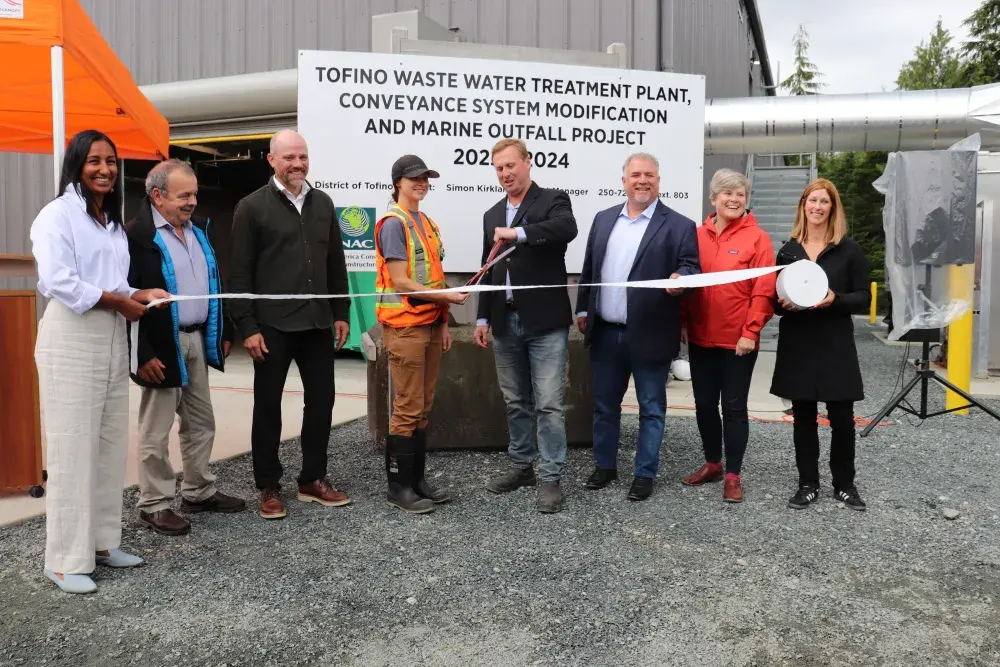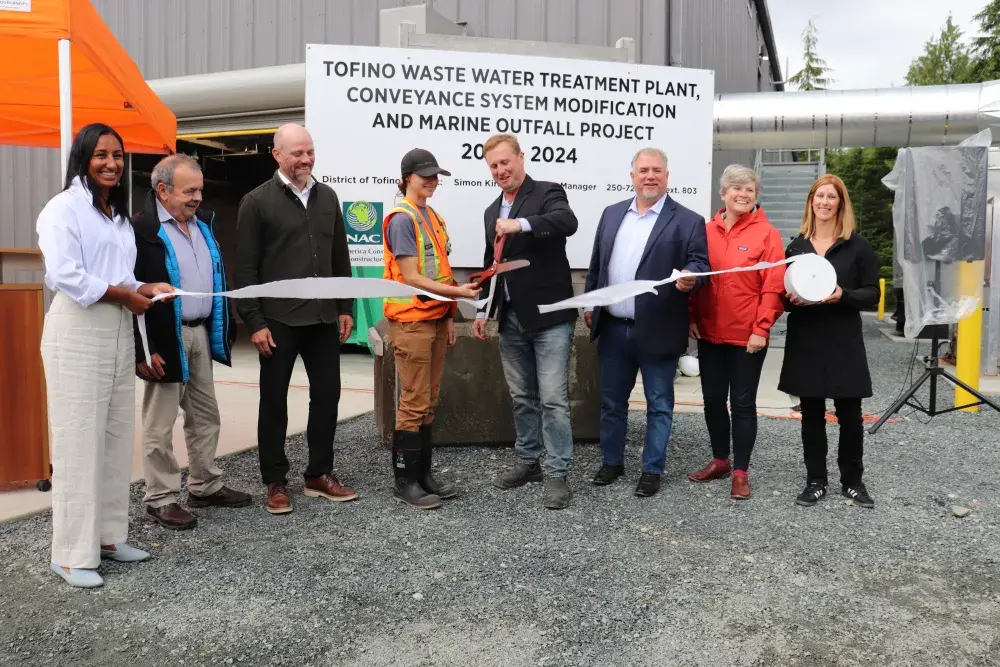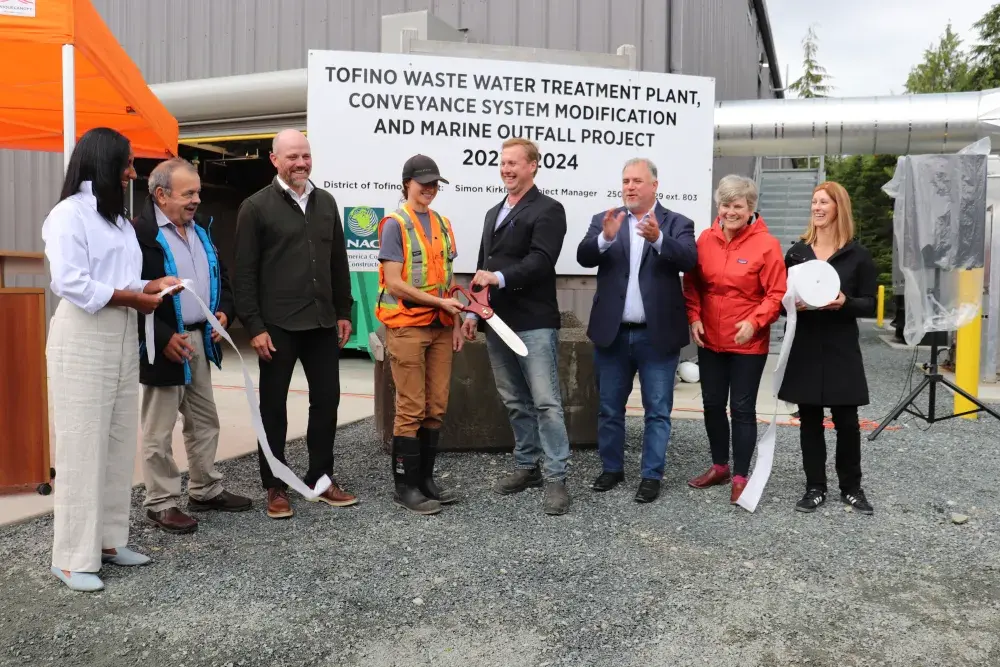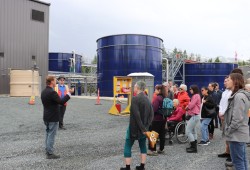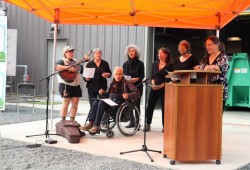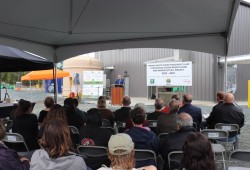West Coasters won’t be surfing in their own poop anymore after the District of Tofino officially opened its new $77.5M wastewater treatment plant on Aug. 22.
The environmental impact of historically dumping raw sewage into the beautiful waters of Clayoquot Sound wreaked havoc on shellfish harvesting areas, according to a Nuu-chah-nulth cultural lifeways guardian.
“The north waterfront of downtown Tofino was a clam garden until recent decades,” said Gisèle Martin.
“I’d love to see the day where clams could be eaten right from the shores again,” Martin added. “If you go to other countries, I was just talking to somebody from Australia, they said you could buy oysters right in the bay from the shore. You can’t do that in Tofino because of the sewage and pollution. There is no reason why, if we were just a little more organized and disciplined, we could be eating clams right from the shore again. I hope we get there in my lifetime.”
Tofino’s wastewater treatment plant, located at the end of Industrial Way with the new outflow pipe at the end of Cedar Street, will service the tourist town of about 2,500 residents, roughly 600,000 annual visitors as well as the neighbouring Tla-o-qui-aht First Nation (TFN) communities of Ty-Histanis and Esowista.
The sewage treatment plant also has enough capacity to intercept wastewater from the TFN community of Opitsaht, which is a quick boat ride across the Tofino inlet, according to Tofino’s manager of infrastructure and capital projects Simon Kirkland.
“There is a future project TFN is going to undertake to install a force main to Tofino from Opitsaht, but it is not in place yet,” said Kirkland.
TFN is in the predesign stage for the 3.2-kilometre pipeline that will connect the village of about 125 Opitsaht residents to Tofino’s wastewater treatment facility. The First Nation has had an agreement with the district since 2008 to pay their share of sewage treatment, according to Tribal Administrator Jim Chisholm.
Kirkland says the district also has the capacity to flow sewage from the Pacific Rim National Park Reserve, but an agreement with Parks Canada has yet to be established.
North American Construction (NAC) and WSP, the engineers on the project, worked with district staff to deliver the project “on time and on budget”, heralds Tofino Mayor Dan Law of the town’s largest investment ever.
“Nothing happens without money. I do want to say how profoundly grateful we are for crucial contributors; federal government, provincial government and our tourism sector who have through the MRDT (municipal and regional district tax) program been contributing a significant amount, $400,000 a year, towards this capital project,” said Law at the Aug. 22 ribbon cutting ceremony, a latrine themed affair that included a poop emoji cake, an apropos poem recited by Tofino Poet Laureate Janice Lore and a performance from the Smooth Moves Choir.
Tofino has the putrid honour of being the last municipality on Vancouver Island to treat its raw sewage.
“We have generations of staff that helped with this,” notes Law.
MLA Josie Osborne was Tofino’s mayor from 2013 to 2020.
“When I moved here 26 years ago, we had a shellfish closure area that was quite small right around where the outfall is and no harvesting of shellfish because the risk of contamination and the risk to human health,” Osborne recalls.
“Over the years, that shellfish area has grown bigger and bigger and bigger as more people moved here and more people visited here. I am so looking forward to the next few years to see that shellfish area grow smaller and smaller and smaller. We know that we are finally doing the right thing, we are taking care of this breadbasket Clayoquot Sound that sustains us all,” said MLA Osborne at the grand opening.
Courtenay-Alberni NDP MP Gord Johns had a hand in advocating for federal project funding.
“This is long overdue. We had decades where we couldn’t get money. We are just too far from Ottawa where they just didn’t care,” said Johns. “This is our priority; protecting the oceans and the ecosystem. These are the values of the people of Tofino.”
Tofino’s wastewater management regime includes two main steps: the first part of the process called the ‘headworks’ removes all the large debris and the secondary treatment involves an aerobic biological process where a vat of bacteria eats all the organics. After the water settles, it’s blasted with UV for disinfecting and then piped into the ocean. The remaining sludge is taken to landfill and can be used for composting.
“Our deepest and my deepest thanks to the Tla-o-qui-aht First Nation. The partnership, guidance and support and just learning about the Nuu-chah-nulth culture since I’ve been out here has been invaluable throughout the processes of this project,” said Kirkland.
“We remain committed to protecting the natural space and rich marine ecosystems that the Tla-o-qui-aht First Nation has carefully stewarded for millennia,” he said. “I also want to thank the residents and businesses of this area for their patience over the years.”
The project saw a lot of roadblocks, both figuratively and literally – during the summer 2023 construction phase the Cameron Bluffs Wildfire closed Highway 4, forcing crews to take the backroads to get to site.
“This project took decades in the making,” said Tofino’s Chief Administration Officer Nyla Attiana. She went on to thank her predecessor Bob Macpherson and her dedicated staff who worked on the project.
“Without the perseverance of these individuals, we would not have been able to complete our liquid waste management plan, receive the necessary grant funding from the provincial and federal government and arrive where we are today with an operational wastewater treatment facility,” Attiana said.
Surfrider Pacific Rim, a local non-profit dedicated to protecting the world’s oceans, waves and beaches, are notably stoked on the news.
"We're delighted to see that the wastewater treatment plant is operational,” said Surfrider Pacific Rim co-chair Eliza Worrad. “This critical infrastructure is a significant milestone for reducing ocean pollution, enabling cleaner and healthier waters for all on the west coast."

